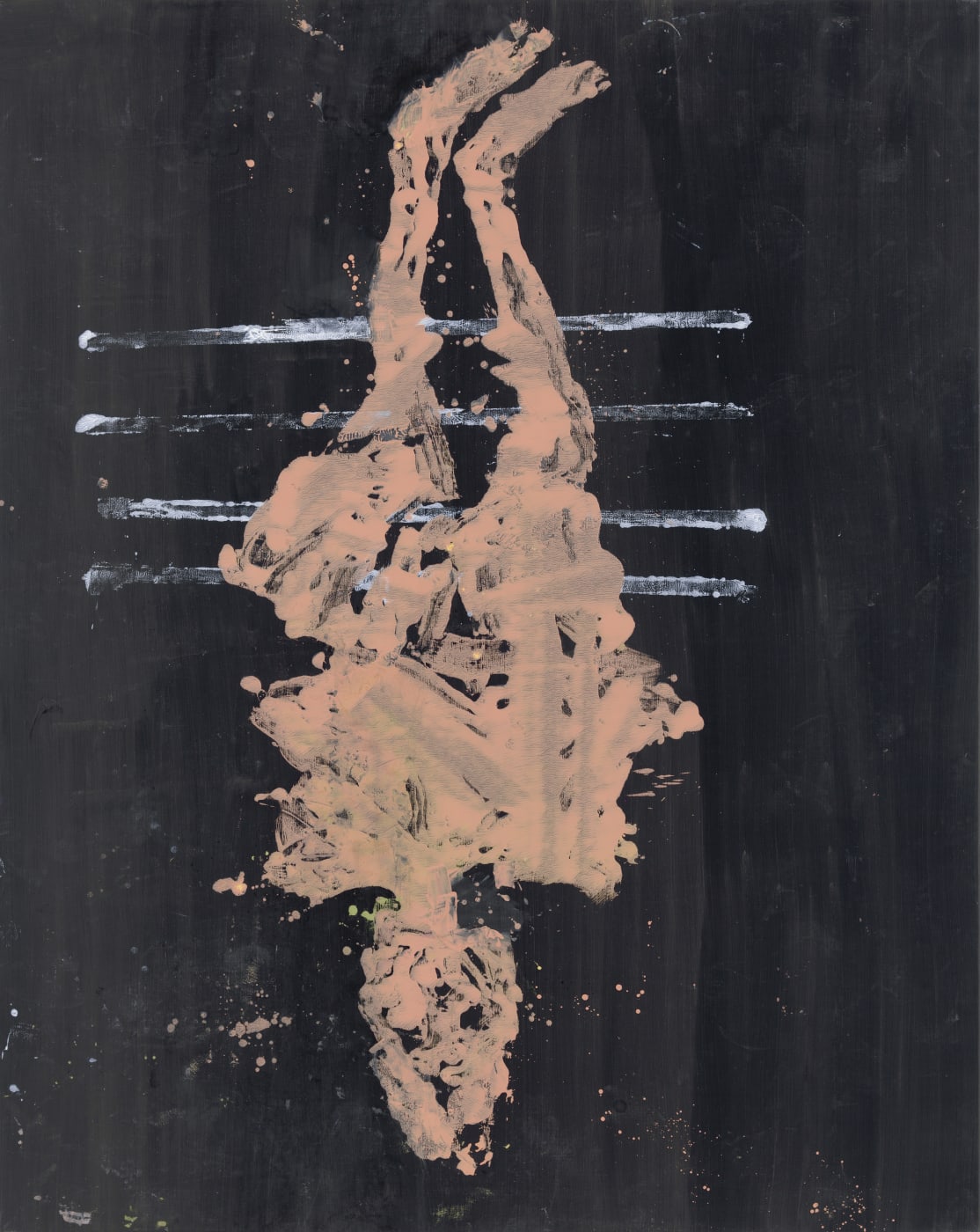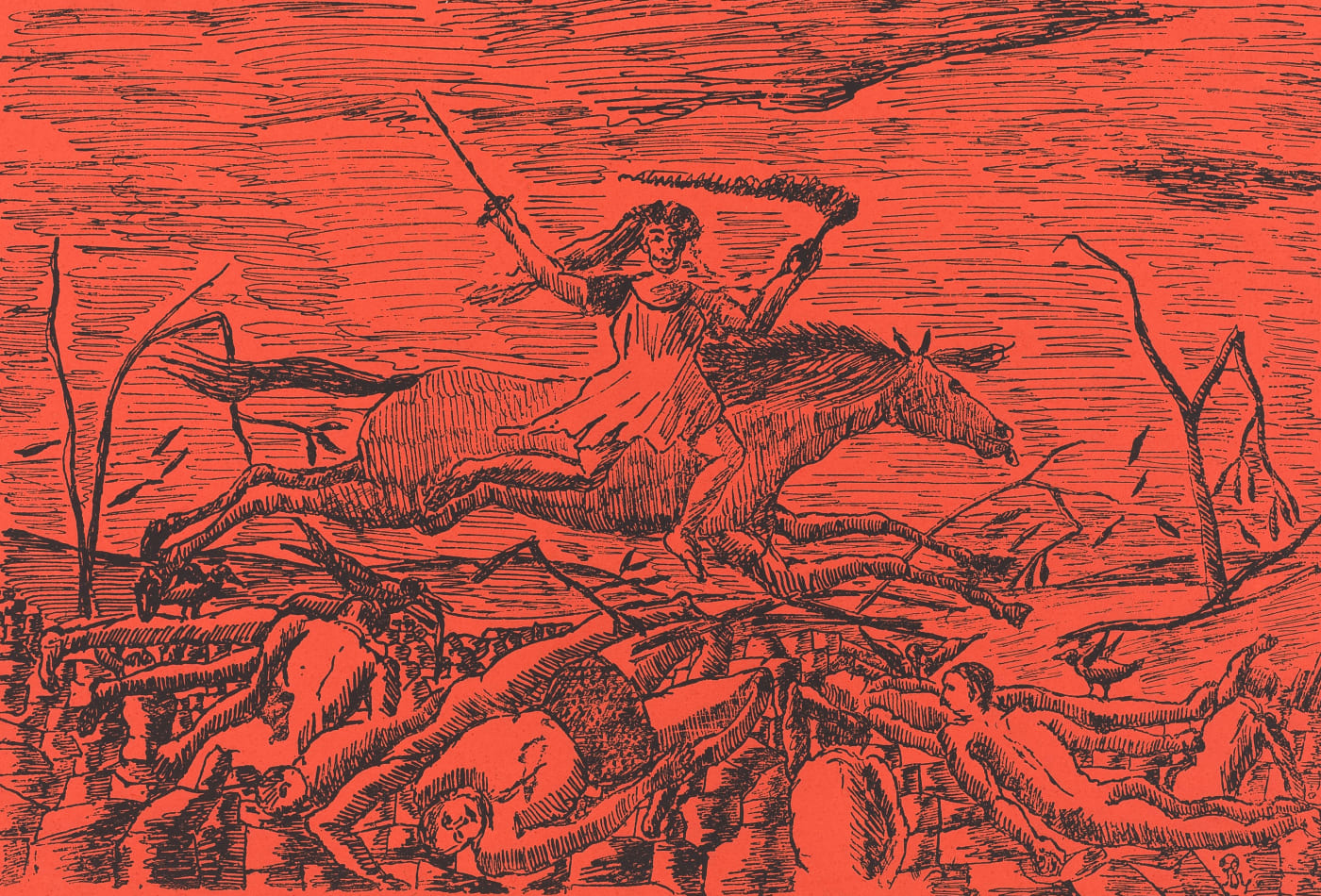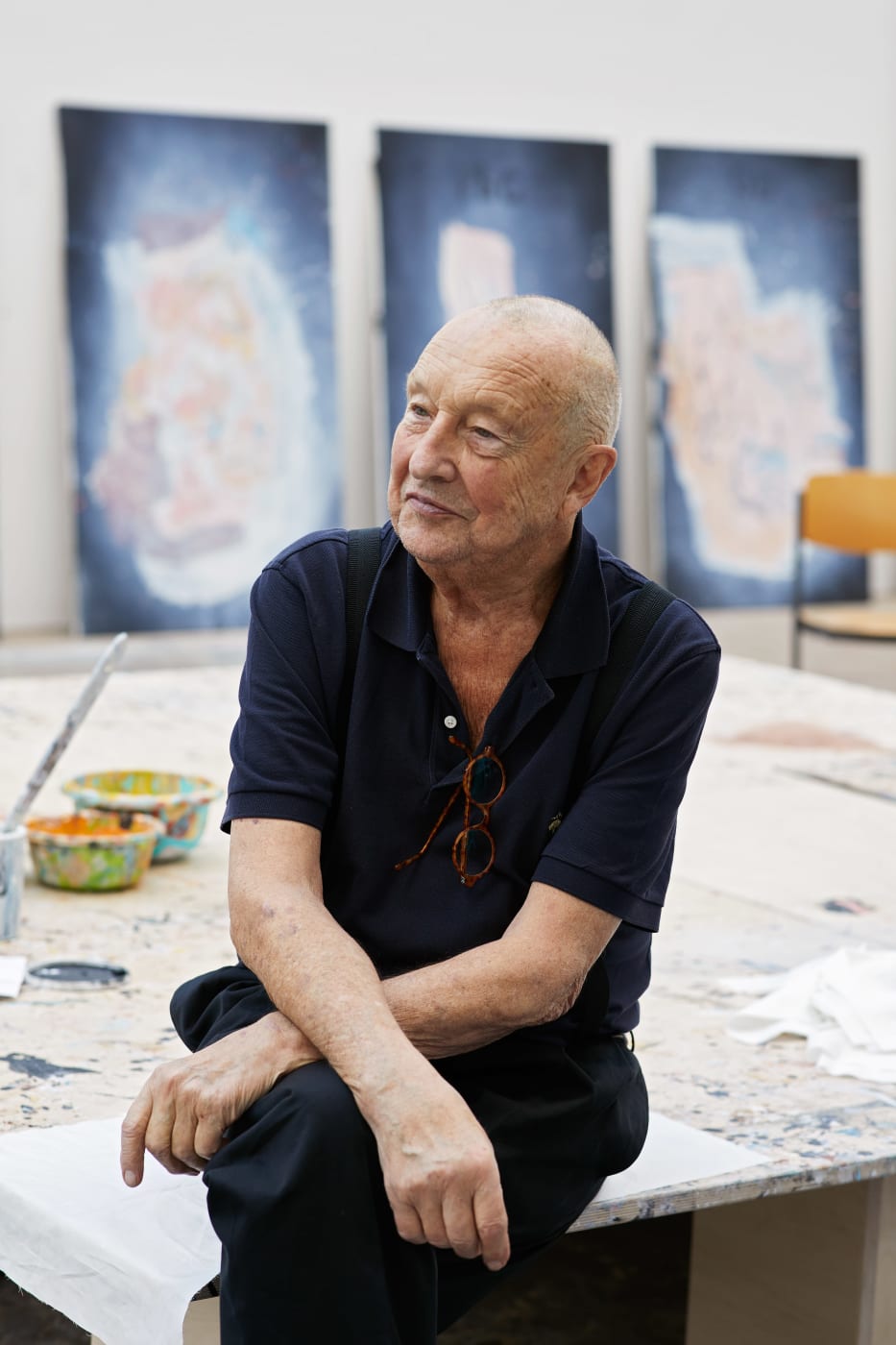타데우스 로팍 서울은 게오르그 바젤리츠의 신작 전시와 함께 개관한다. 이번 전시를 위해 특별히 제작된 12점의 회화와 12점의 드로잉 신작을 최초로 선보일 예정이다. 바젤리츠와 한국의 인연은 15년 전 국립현대미술관 과천관에서 개최된 그의 첫 개인전으로 거슬러 올라가며, 그 인연은 지금까지도 이어져오고 있다. 동시대 가장 중요한 예술가 중 하나로 꼽히는 바젤리츠는 반 세기 동안 독일 예술의 새 지형도를 만들었을 뿐만 아니라, 1960년대 이후 국제 미술계에 지대한 영향력을 행사하는 작가이다. 뿐만 아니라, 이 전시는 퐁피두 센터(Centre Pompidou)에서 개최될 바젤리츠의 대규모 회고전과 맞물려 전시된다.
Thaddaeus Ropac Seoul opens with an exhibition of twelve paintings and twelve drawings by Georg Baselitz, which were created specifically with the opening of the new gallery space in mind. The artist’s historic connection with the city dates back to his first institutional solo exhibition in Korea at the National Museum of Modern and Contemporary Art in 2007. One of the most important artists of our time, Baselitz shaped a new identity for German art in the second half of the 20th century and has had a profound influence on international art since 1960. The exhibition will coincide with the opening of the artist’s largest retrospective to date, at the Centre Pompidou, Paris.
선교사들의 유랑에도 불구하고, 세계 곳곳의 이미지들은 각기 다른 모습으로 남아있다. 하지만 한국과 독일에서는 비슷한 이야기들이 사람들 사이에 전해진다. 이곳의 예술과 그곳의 예술은 두 개의 거대한 기념비이다. 서로 비교될 수는 없지만 웅대한 그런 기념비 말이다. 오늘날 비행기보다 더 빠르게 움직이는 것이 그림이라는 사실이 참으로 흥미진진하다.
— 게오르그 바젤리츠
Despite the wanderings of missionaries, images have remained different in the world. But in Korea and in Germany, people tell each other similar tales. The art here and there are two great monuments. Quite incomparable, but magnificent. Today, pictures are faster than airplanes, and that is very exciting.
— Georg Baselitz
색을 전송하는 이 방식은 추상으로 가는 연결다리 역할을 해왔다. 아마 아직도 그럴 것이고.
— 게오르그 바젤리츠
The transfer method has been a bridge to abstraction. Maybe it still is.
— Georg Baselitz

바젤리츠의 신작들은 추상화되었지만 여전히 감각적인 엘케라는 다분할된 인물을 비정형적 공간 속에 고립되어 매달린 모습으로 보여준다. 이러한 형상들은 오직 의자와 같은 구조로 고정되어있는데, 이는 이미지를 중앙에 집중시키기 위한 작가의 의도로, 이것에 대해 작가는 ‘그것이 그의 자리를 찾도록 돕기 위해’ 라고 설명한다.
Abstracted yet sensuous, the multipartite figure of Elke is suspended in isolation in an undefined space. She is anchored only by a chair-like construction, which Baselitz incorporates to centralise the image – ‘to help the figure find its space’.
Go in and out, 2021
Oil on canvas
250 x 200 cm

새롭게 선보이는 대형 회화 연작에서 그는 50년이 넘도록 자신의 예술적 발전에서 중요한 위치를 차지해 온 부인 엘케(Elke)의 이미지를 집중적으로 탐구하였다. 그는 형식에서 내용을 배제하기 위한 노력의 일환으로 1969년 이래 작품의 구도를 거꾸로 뒤집어 왔는데, 이러한 형식적 접근은 자신에게 너무나 친숙한 엘케를 그리는 과정 중에 인물의 초상 속으로 잠입할 법한 어떠한 조화나 아름다움을 붕괴시키는 역할을 담당한다.
In his new series of large-scale canvases, Baselitz devotes himself to the motif of his wife Elke, whose image has occupied a prominent position in the development of his practice for over 50 years. In order to empty form of its content, the artist has been inverting his compositions since 1969, disrupting any harmony or beauty that was likely to seep into the portrayal of a subject so familiar to him.
Einzelzimmer, Einzelbett, 2021
Oil on canvas
250 x 200 cm
비슷한 주제로의 반복적 작업은 바젤리츠로 하여금 형식적 발전을 추진하게 하였고, 또한 그의 작품 세계를 지속적으로 갱신하게 하는 계기가 되었다. 엘케의 지배적인 물리적 존재감은 색의 전이를 통해 감상자에게 전달되는데, 이는 그가 최근에 옮긴 잘츠부르크 스튜디오에서 실험한 기술을 활용한 것이며, 이러한 작업 과정 속에서 우연의 요소들이 작품에 개입된다.
The repeated return to this very familiar subject has allowed Baselitz to continually renew his practice through formal developments: Elke’s dominating physical presence is presented to the viewer through the transfer of colour, a technique the artist developed recently in his new studio in Salzburg and which introduces an element of chance into his compositions.
나는 캔버스를 바닥에 눕힌채로 작업을 하기 시작한다. 예를 들어 내가 5-60년 동안 그려 온 엘케의 초상 작품이 그렇다. 나는 아주 어린아이 같이, 간단하고, 어리석고, 또 꽤나 잔혹하게 그린다. 잘 전송하기 위해 몇몇의 특정한 규칙을 지킨다. 색끼리 접촉이 되면 안된다든가, 어딘가에는 꼭 빈 공간이 있어야한다든가 하는 등 말이다. 그리고는 캔버스를 그 위에 올리고 전송시킨다. 그것이 잘 옮겨졌는지 아닌지는 보는 즉시 알 수 있게 된다.
—게오르그 바젤리츠
I paint lying on the floor, Elke’s portrait for example, as I’ve been doing for 50 years – 60 years. I paint it in a very childish way, in a very simple, very foolish way, quite brutal. Because I want to transfer it, I stick to certain rules: the colours must not touch and there must always be a free zone, and so on. I then lay a canvas on it and transfer it. And that either works or doesn’t – but either way you can tell immediately.
— Georg Baselitz

이번 전시의 제목인 ‘가르니 호텔(hotel garni)’은 프랑스어로 저가 호텔을 의미하는데, 이는 파블로 피카소(Pablo Picasso)의 작품 〈아비뇽의 처녀들(Les Demoiselles d’Avignon)〉에서 착안된 발상이 작가 특유의 유머러스한 연상의 과정을 거쳐 고안된 제목이다. 여기서 작가는 단순 언어 유희에 그치지 않고 자신의 예술적 선조 피카소의 가장 위대한 업적 중 하나인 〈아비뇽의 처녀들〉에서 나타난 대치적 구성과 비관례적 여성성을 소환한다.
In his choice of the exhibition title Hotel garni, Baselitz references the scene of Pablo Picasso’s Les Demoiselles d’Avignon (1907) through a characteristically humorous chain of associations. He is playful with words while summoning the confrontational composition and unconventional femininity of one of his historic forebear's greatest artistic achievements.
Pablo Picasso
Les Demoiselles d'Avignon, 1907
Oil on canvas
243.9 × 233.7 cm
© Succession Picasso/Bildrecht, Wien 2021
피카소의 〈아비뇽의 처녀들〉은 언제나 다양한 방식으로 내게 흥미롭게 다가왔다. 과거부터 현재까지 이와 관련된 많은 작품들을 만들었다. 형태적으로나 미학적으로의 관련이라기보다는, 작품의 제목이나 이야기적 측면적으로 말이다.
—게오르그 바젤리츠
…this painting [Les Demoiselles d’Avignon] has always interested me very much in various ways. I have made many works in the past, in my recent past, in relation to this. Not formally, not aesthetically, but just related to the story and the title.
— Georg Baselitz
이번 전시에서 선보이는 드로잉 작품들은 진홍색과 검정색 잉크로 제작되었는데, 이러한 일련의 작품들은 강한 감정을 내포한다. 거침없는 선과 윤곽을 통해 작가의 흔적을 직관적으로 엿 볼 수 있으며, 이는 매체를 가리지 않는 그의 개인 연구적 면에서 다른 회화 작품과도 결을 같이 한다.
The works on paper included in the exhibition are drawn in black or sanguine ink, which lends the images a visceral quality. The decisive graphic lines and contours show direct traces of the artist’s hand and represent a parallel strand to his paintings, demonstrating the development of his personal iconography across media.
수사슴은 바젤리츠의 고향인 도이치바젤리츠로부터 기인한 것으로, 숲과 사냥의 전통이 있는 도이치바젤리츠의 특성을 반영한다.
A recurring motif in his work, the stag is a subtle reference to Baselitz’s hometown of Deutschbaselitz, which is defined by its forests and the tradition of hunting.

피를 연상케하는 붉은 빛의 색이 강조되는 드로잉 작품들은 앙리 루소의 석판 인쇄작품, 〈전쟁 La Guerre(The War)〉(1895)으로부터 착안되었다.
In their strong emphasis on the blood-red colour, the works on paper reference Henri Rousseau’s lithograph La Guerre (The War) from 1895.
Henri Rousseau
La Guerre, 1895
Lithography on red paper
21.5 x 32.5 cm
© Artokoloro
나는 항상 과거의 예술과 관계를 맺어왔다. 내가 어린 시절, 동독에 살았던 시절에 함께 사유하고 생활하며 작업을 시작하게끔 했던 그런 예술 말이다. 한국에서는 이게 무슨 뜻인지 바로 알 것이다. 독일은 한국처럼 동과 서, 둘로 나눠진 적이 있다. 안타깝게도 한국은 아직 분단 상태이지만 말이다.
—게오르그 바젤리츠
I have always had a connection with the art of the past. I am interested in the art that was, and with which I ultimately began to think, to live and to work as a child, during my time in the East. This you can certainly understand very well from Korea – we were divided into two halves in Germany, East and West, just as Korea, unfortunately, is still divided.
— Georg Baselitz

Exhibition Catalogue
이번 <가르니 호텔> 전시와 연계하여 출판된 도록에는 국립현대미술관 김남인 학예연구사의 에세이를 비롯하여 바젤리츠의 다양한 작품이 수록되었다.
The exhibition is accompanied by a fully illustrated catalogue with an essay by Kim Namin, art writer and curator at the National Museum of Modern and Contemporary Art, Korea.

Georg Baselitz
60여 년에 걸친 예술 인생을 통해 게오르그 바젤리츠는 정형화된 단일 양식에 한정되길 거부하면서 끊임없이 자신의 예술적 실천을 새롭게 해왔다. 그는 회화, 조각, 판화, 드로잉을 포함해 자신이 작업하는 다양한 매체의 관습을 재정의하고 있다.
In a career spanning six decades, Georg Baselitz has constantly renewed his practice, never allowing himself to become restricted by a single, identifiable style. He has redefined the conventions of the various media in which he works, including painting, sculpture, printmaking and drawing.


























































































































































































